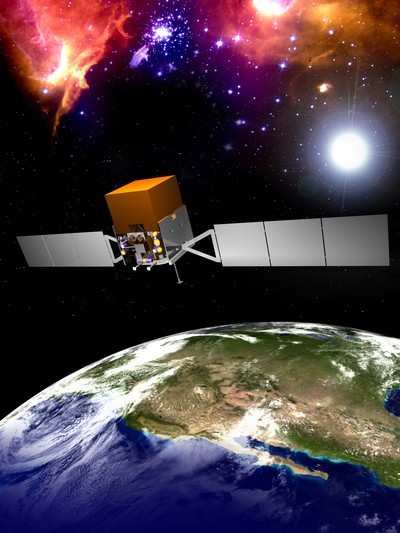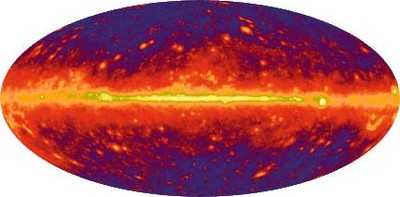Teams Across The Country Will Monitor Astrophysics
Experiments
Several bases of operations for NASA's Gamma-ray Large Area
Space Telescope (GLAST) are gearing up for data from the recently
launched satellite, the space agency said this week. Operations
centers preparing for data from GLAST include NASA's Goddard Space
Flight Center in Greenbelt, MD, NASA Marshall Space Flight Center
in Huntsville, AL, and the Stanford Linear Accelerator Center in
Menlo Park, CA.

NASA Goddard is responsible for several aspects of GLAST's
mission as it begins transmitting data for the world to see. The
GLAST Mission Operations Center (MOC) and the GLAST Science Support
Center (GSSC) were provided by and are located at NASA Goddard.
The second operation is the Large Area Telescope (LAT)
Instrument Science Operations Center (ISOC) at the Stanford Linear
Accelerator Center (SLAC), in Menlo Park, CA. The ISOC is
responsible for maximizing the LAT's science performance in the
areas of Flight Operations, Science Operations and the development
of Science Analysis Systems.
The ISOC's Key Functions include command planning, generating
and validating commands and command sequences, monitoring the LAT's
health and safety, maintaining and modifying flight software,
verifying and optimizing LAT performance, processing and archiving
LAT science data, maintaining and optimizing the software that
produces science data products and distributing science data
products and instrument analysis tools to the LAT Collaboration and
the GLAST Science Support Center (GSSC).
ISOC manager Rob Cameron from SLAC said, "Powering up the LAT
has been even smoother than we had hoped. Everything has worked
well -- in fact, it's going great. We're already receiving
high-quality data that we can use to get the instrument ready for
the best science return."
The observatory is commanded from the Mission Operations Center
(MOC) at NASA Goddard Space Flight Center, and during the present
initial on-orbit commissioning phase is staffed by a team from
across the mission, including from SLAC.
The third operations area is at NASA's Marshall Space Flight
Center. Marshall hosts the GLAST Burst Monitor (GBM) Instrument
Operations Center. Located at the National Space Science and
Technology Center (NSSTC) in Huntsville, operations personnel and
scientists working in the GBM Instrument Operations Center will
scrutinize the health of the monitor and enjoy a first-hand peek at
ground-breaking new gamma ray science. The NSSTC is a partnership
between NASA, the state of Alabama and several universities.
The GLAST Science Support Center (GSSC) will serve as the
primary interface between the GLAST mission and the scientific
community. The GSSC will support the planning and scheduling of
science observations, as well as establishing and maintaining a
publicly accessible archive of all GLAST data products. Data
analysis software and documentation will also be maintained and
disseminated by the GSSC. In addition, the GSSC administers the
guest investigator program for NASA HQ providing proposal
preparation tools, documentation as well as technical and
scientific support.

"As manager of the GLAST Science Support Center (GSSC), my most
important responsibility is to facilitate broad community
involvement in the science," said Chris Schrader of NASA Goddard.
"The GSSC will provide access to the GLAST data, the software to
analyze those data, and assist scientists from the US and abroad
who wish to become involved in this exciting new endeavor."
Launched June 11, NASA's GLAST mission is an
astrophysics and particle physics partnership, developed in
collaboration with the US Department of Energy, along with
important contributions from academic institutions and partners in
France, Germany, Italy, Japan, Sweden, and the US.
 ANN's Daily Aero-Term (05.01.24): Say Altitude
ANN's Daily Aero-Term (05.01.24): Say Altitude ANN's Daily Aero-Linx (05.01.24)
ANN's Daily Aero-Linx (05.01.24) Classic Aero-TV: Korean War Hero Twice Reborn
Classic Aero-TV: Korean War Hero Twice Reborn Airborne 04.29.24: EAA B-25 Rides, Textron 2024, G700 Deliveries
Airborne 04.29.24: EAA B-25 Rides, Textron 2024, G700 Deliveries Airborne Affordable Flyers 05.02.24: Bobby Bailey, SPRG Report Cards, Skydive!
Airborne Affordable Flyers 05.02.24: Bobby Bailey, SPRG Report Cards, Skydive!




